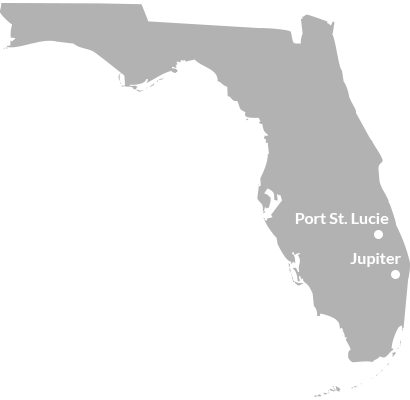The Guide To How To Get Rid Of Termites
Are you looking to get rid of termites quickly so you can save your home and spare yourself from expensive repairs? In this article, we’ll cover everything you need to know about termites, and how to get rid of them so you can handle them in the most effective way possible.
What are Termites?
Termites are tiny insects that are around a quarter of an inch long. There are two major types of termites you should know about, dry wood termites and subterranean termites. Here are the differences you should know between the two termites:
Dry wood Termites
Dry wood termites are active above ground and live within the wood they infest. They have protruding mouth pincers, eat across and along the grain of the wood, and make small holes in the wood to push out debris and feces from their nest.
They generally do damage to the following areas of buildings and homes:
- Rafters
- Decks
- Porches
- Floors
- Frames
- Furniture
- Roof sheathing
These termites are usually found in coastal regions, but they can be accidentally transported when infested wood or furniture is moved from one place to another.
Subterranean Termites
Unlike dry wood termites, subterranean termites live in the soil under and around homes.They generally enter the home through the wood that touches the ground or by constructing mud tubes from the ground up to the wood they have begun infesting. Subterranean termites are even worse than dry wood termites and cause up to 95% of all termite damage in North America, and can destroy:
- Home foundations
- Support beams
- Plastic pipes
- Installation areas
Knowing the difference between these two termite types will make it easier to figure out how to get rid of termites of every kind.
How to Locate Termites
There’s a reason termites are known as “hidden invaders”- they’re incredibly difficult to spot But catching them quickly is essential for eliminating them before they can do heavy damage. Here are some tips on how to spot termite damage quickly:
Inspect Any Wood You Think is Termite Infested
If you’re worried about termites, the first thing you should do is check out any wood you think could be infested. By inspecting the wood, you can see the signs of potential infestation, and quickly find a pest management pro to help you address the problem.
Think You Have Subterranean Termites?
As mentioned above, subterranean termites eat wood along the grain. This means the wood will have a distinct gallery pattern. If you see this pattern, you should immediately call a pest management specialist because these termites have massive nests with millions of pests that can quickly and effectively destroy your home.
Think You Have Dry Wood Termites?
Dry wood termites excavate part of the wood by chewing along and against the grain. As mentioned above, they push out fecal pellets from their tunnels and chambers. So, if you see wood-colored mounds gathering on flooring underneath these infested sections, you’ll know you have dry wood termites. If you think you have termites, you should absolutely hire a termite inspection expert to confirm any infestation.
Professional Termite Treatment Options
When it comes to treating termite infestations, many people turn to DIY methods, which can be ineffective and ultimately result in even more property damage. That’s why we recommend you follow these professional termite treatment options so you can quickly deal with any infestation and save your home.
Tenting/Fumigation
If you have an extreme termite infestation, you may want to connect with an exterminator for a fumigation. During the tenting process, tarps are placed all over the home, and fumigant is dispersed, which then penetrates all timber, trim, and wood finished furniture, ultimately eliminating the termites. And while it requires your family to stay elsewhere during the process, you can usually return to your termite-free home within 2-3 days. Costs for fumigation can vary greatly due to things like the location of your home, local laws, and other relevant factors. And while it is expensive, it is the most effective way to get rid of termites when your home is at risk of extensive structural damage.
Termite Heat Treatment
Looking for another way of how to get rid of termites? Well, termite heat treatment is another common alternative to gas fumigation. During this process, hot air is pumped into your home instead of chemicals, and the heat is applied and maintained until all the dry wood termites are killed. This treatment is great if you’re looking for spot treatments, and what’s better is that the whole process takes only one day to complete. This process is safer than fumigation, but it does require you to remove heat-sensitive items and furniture pieces from your home that cannot stand that kind of heat. This process is a bit cheaper than fumigation, but it does require your home to be tented in the same way. And you will have to remove all your heat-sensitive items or pay for a service to do that for you.
Termite Cold Treatment
Termite cold treatment does the opposite of heat treatment but has the same impact. In this treatment, liquid nitrogen is used to bring the home down to a consistent 15 degrees Fahrenheit, which effectively kills off the termites. This process has the same risks and cost as heat treatment, but it takes roughly four days to complete.
Final Thoughts on How to Get Rid of Termites
When it comes to termites, the key to saving your home is taking care of them in the most effective way possible. By following the advice and professional treatment options in this article, you can eliminate any termites and save your home from further damage. Are you currently dealing with a termite infestation? Do you live in Florida? If so, contact us for free consultation and assistance with all your pest problems.


